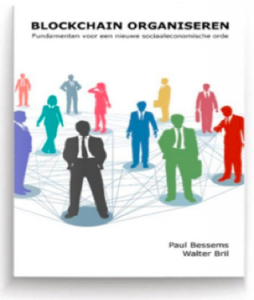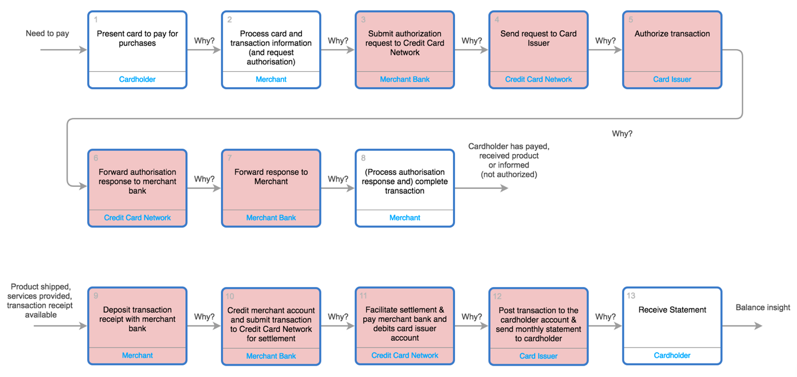
A Blockchain author in our midst
Last month. Walter Bril, one of the Elements.cloud Customer Success Managers presented his 650 page book “Blockchain organizing” to a member of the European parliament. He co-authored the book with Paul Bessems, an organization and logistics expert.
We thought it would be really interesting if he wrote a guest blog….
Now… Have you ever wondered why in Elements.cloud we use the default text “Why” on our flowlines? And what this has to do with a book on blockchain?
Let me put it in a slight different way: How much friction do you want to be present in your business and processes?
This blog is about the why…
From no text on a flowline to business value
Let’s start with the why… Whenever I come across typical process diagrams, I more than often notice either no text on flowlines or the text is limited to status information. What do I mean with this? And why would that be an issue in the first place? Well, obviously if there is no text at all, this basically tells me: We’re apparently spending time and money at a lot of activities but haven’t really thought through why. Or we simply assume everyone knows and agrees. Or we just didn’t bother to write them down… Either way: This causes ongoing and costly discussions during workshops… Sounds familiar?
The next thing I often encounter, are diagram’s that use merely a (system) status on their flowlines. And these come mostly as the past tense. For example: “Store customer profile” will often lead to an output named as: “Profile stored”. Which is used for all the good reasons, but it doesn’t add much business value as it doesn’t justify as to why we are spending time and money on this activity…
In many situations, process documentation describes related activities in the context of our existing thinking model. So with all the existing law and regulation, but also “the way we have always done this business.” And this and all it’s default friction, is considered as a given, you simply have to live with it. Really?
Friction & disintermediation
Speaking about friction… Have you ever considered a Credit Card Clearing and Settlement process? See this (simplified) example:
The red boxes are plain freak’n friction. They add no value whatsoever if you look at the actual use case:
Buyer (peer 1) wants to pay a merchant (peer 2) for a product or service. Period.
Now… there is obviously a reason why the red boxes exist: We cannot simply trust that the buyer has sufficient credit. And therefore, we innovated and outsourced this trust to several trusted third parties. In this case the Merchant Bank, Credit Card Network and the Card Issuer. Now what if I can put the trust somewhere else. For example, in the transaction system itself? We wouldn’t need these costly intermediates anymore… Well, enter the blockchain…
The blockchain and the why…
So, where the book “Blockchain organizing” focusses on the upcoming trust industry with ample social-economic impact, Elements.cloud already addressed the why for years and for a good reason…
Whilst blockchain technology has true potential to disintermediate, you could still miss the point. As with “Do we need ‘a blockchain’ to make our processes more efficient” you need to answer the more fundamental question: Why does this activity exist? What is it’s true business justification? Seriously trying to answer the why’s on our flowline, will dramatically provide your insight, lead to less fog and confusion. Both on high level, as low level. So, start answering the why’s in order to lower the friction…
Elements.cloud and blockchain
What about being able to look at content (both operational as audit data) that you can instantly trust and if in doubt, verify with a button? Well, we are currently investigating content verification using blockchain technology… So watch this space!

For people that can read Dutch, you can order the book: https://www.bol.com/nl/p/blockchain-organiseren/9200000078238162/
Sign up for
our newsletter
Subscribe to our newsletter to stay up-to-date with cutting-edge industry insights and timely product updates.






